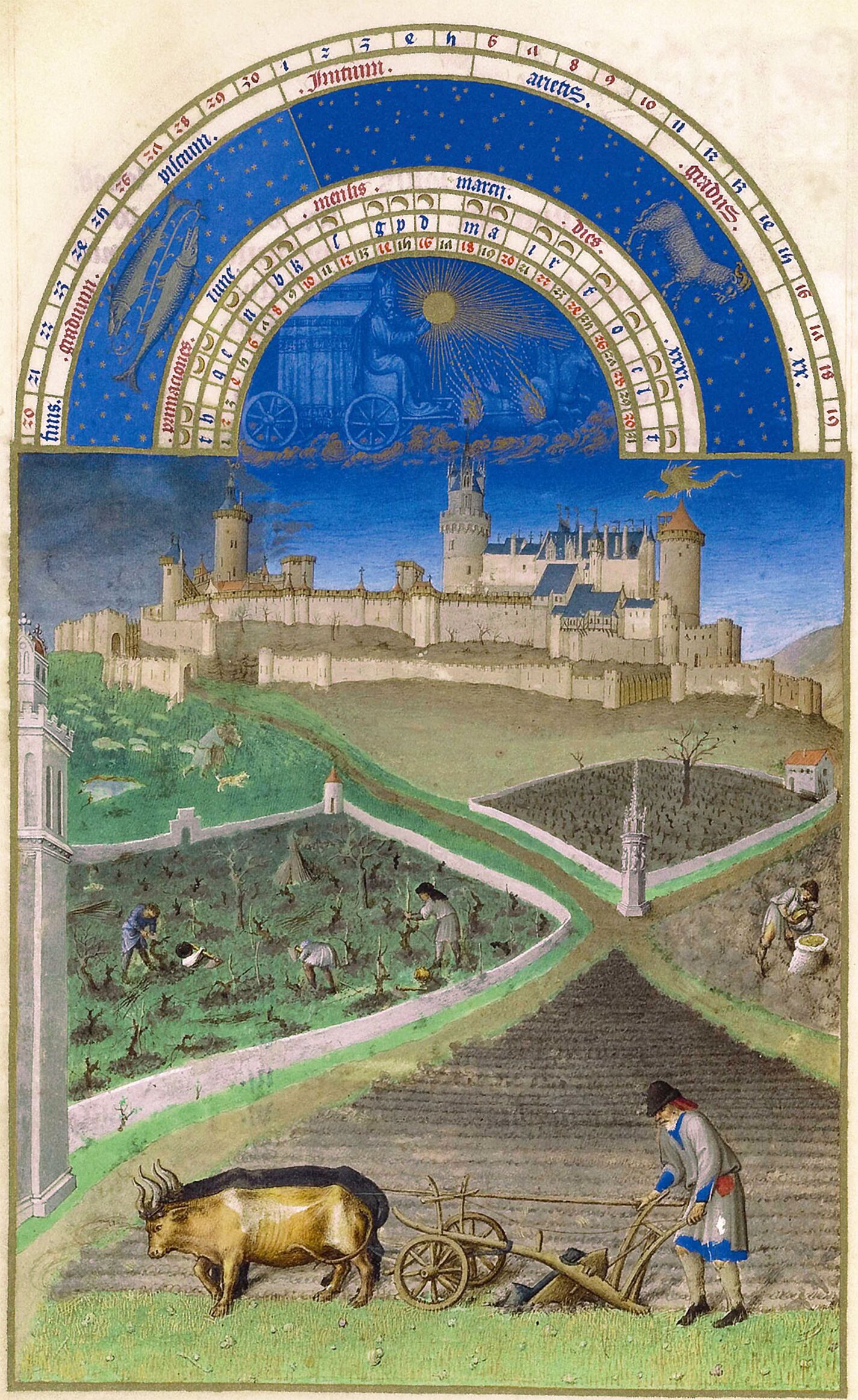Limbourg brothers; Barthélemy d'Eyck
The chariot of the Sun passes from Pisces to Aries. A cippus stands at the point at which two tracks intersect, delineating the boundaries of four fields. In one lot, a pesant (his clothing is patched) firmly grips the handles of his plough and seems to be in full command of his team, goaded with a long stick. The metal ploughshare smoothly slices the earth, although the ground is stony. In the neighbouring field, the time has come for sowing. Nearby, we see other peasants, with billhook and hoe, pruning and weeding out the vines. In the distance, we also see two men and a dog caught in a shower. Dominating the scene are the fortifications of Lusignan, in the Poitou region, a long-established winegrowing area. John of Berry seized this fortress back from the English in 1374, which he then strengthed with double walls. The dragon appearing over the characteristic tower of Poitou harks back to the romance, Mélusine, written by Jean d'Arras, the duke's secretary, in 1393. The true identity of the serpent woman, the progenitor and guardian of the House of Lusignan, was discovered by her husband — count Raymondin — as she bathed (whereupon she took to the air with a cry). However, having been “turned into a serpent” she frequently returns to the castle she founded, as already illustrated in the earliest manuscrips dedicated to this romance (Paris, Bibliothèque de l'Arsenal, ms. 3353, fol. 155v, and BnF, fr. 1485, fol. 128). on another tower, we see a small weather-vane dragon. Apparently, the Limbourg brothers began their full-page illuminations from the top. On this page, the lower part was left incomplete. The group with the ploghman in the foreground, with the characteristic cast shadows, is by Barthélemy d'Eyck.
